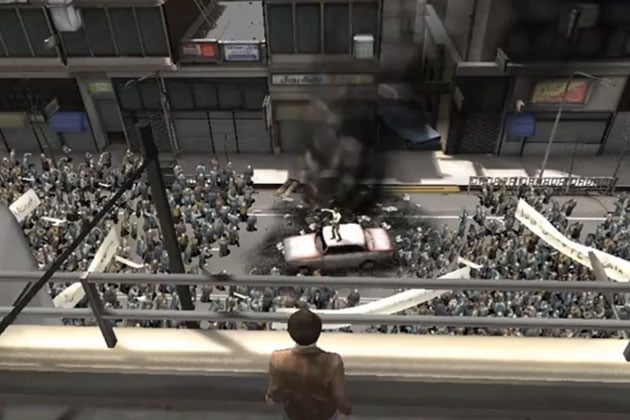Cameras were not present to capture Tiger Woods pulling out of his driving and hitting a fire hydrant, then a tree in 2009, nor to see his wife smash a car window with a golf club and drag Woods out of the vehicle. So to simulate the events of the story, a Taiwanese news service called Next Media Animation created an animated video of the ordeal, complete with shattering glass.
Since then, the company has produced similar videos based on celebrity news and even breaking news. At the time, I thought that these videos might actually catch on, and simulated reality would fill in the gaps when we couldn’t get real video footage. But they didn’t, at least not in the United States.
Yesterday at the Games For Change Festival’s day-two demo session, I saw a game in progress that took animated scenarios to a new level, and it really opened up some ideas for journalism.

The game is called 1979. Created by Navid Khonsari, founder of iNK Stories, the game is based on the 1979 Iranian Revolution.
Players select one of a few characters to play, and the game is played from that character’s point of view. In Khonsari’s video demo, a player took the perspective of a young protestor who has just seen someone shoot his cousin in the chest. The player is instructed to open up the cousin’s shirt, so he used the touchscreen to push apart the buttons on the cousin’s shirt. He scrubbed the screen with his finger to wipe away blood. He held his finger on his wound to prevent more bleeding. But it’s all to no avail. No matter how hard his character tries to save his cousin, he dies.
Other characters are given different tasks. One character is asked to take a photo of protestors on a street. A photo of a protester yelling angrily, which the player takes using a simulated camera inside the game, returns an actual historical photo of that exact scene. In fact, the protest simulated in the game is based on historical photos, videos and accounts of what actually happened. Throughout the rest of the game, players see real pamphlets passed out in Iran, and listen to real recordings taken during the revolution.
Significant actions players take also influence what happens later in the game. For example, a character may need to decide whether to keep illegal contraband, which could mean going to prison if a police officer finds out, or if the player refuses to keep the contraband, the game may be played out without an object useful to the revolution. Each scenario is based on historical research.
Playing the game feels like watching a movie, except that you make all the important decisions. It’s engaging and it’s scary, and it’s a great way to learn.
So how can we use this kind of simulation game in journalism? Here’s an example: Imagine an investigative story that exposes labor violations, discrimination or unsafe workplaces that lets users experience for themselves situations that real people in terrible situations have to experience every day. Imagine making a simulation game to report on human rights violations, child labor, war, etc. Using this type of gaming, a user can face the same tough decisions virtually that our sources face in reality. Though it’s not a trivial reporting task to get enough detail to support data-rich, accurate simulations, it’s certainly worth doing. Reading about an injustice is one thing. Experiencing it for yourself, even in simulation, is quite another.
This is the second of three posts about the 10th Games For Change Festival. Read the first: What News Nerds Can Learn From Game Nerds, Day One, and the third: Four Games that Tackle Serious Issues.











